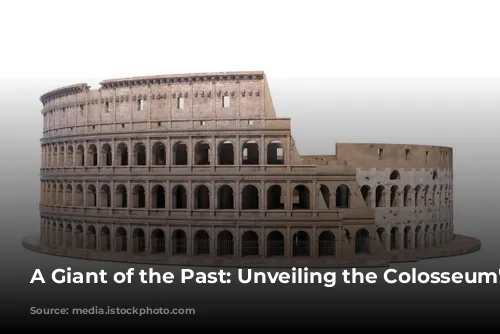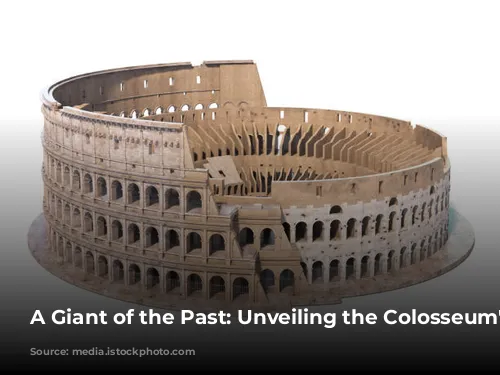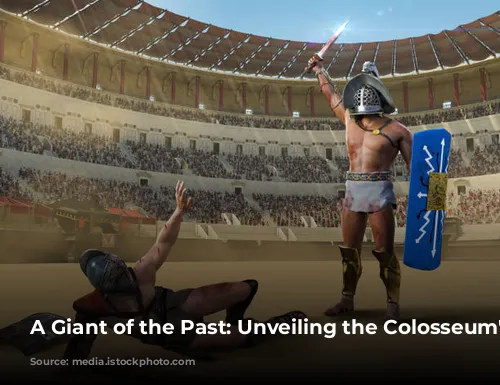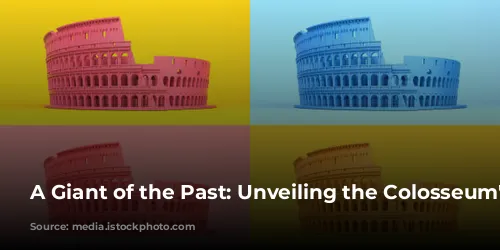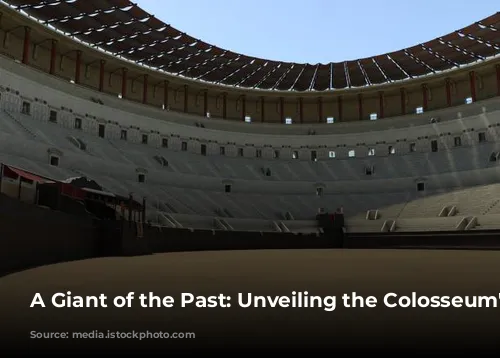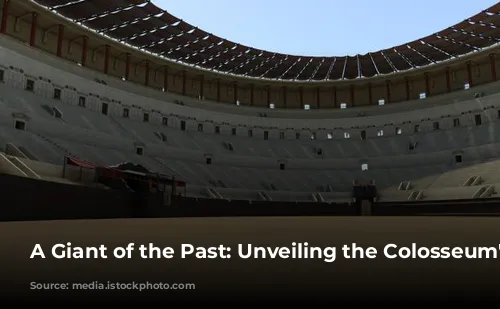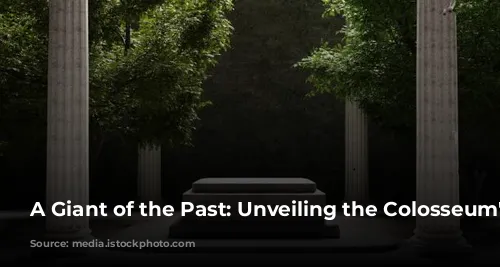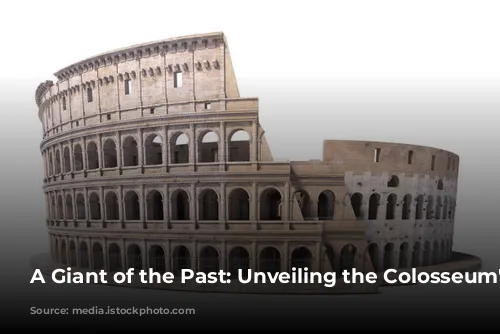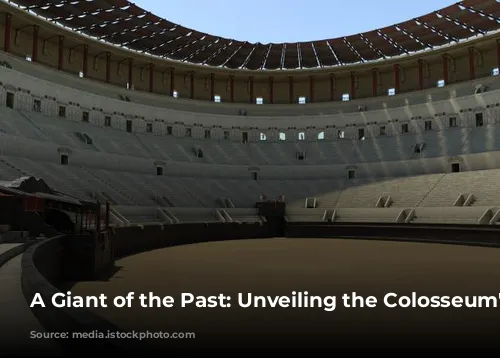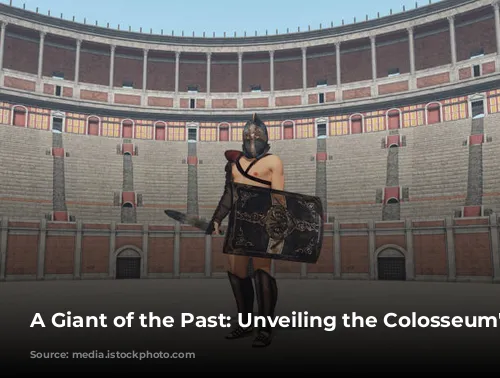The Colosseum, a colossal testament to Roman grandeur, stands as a symbol of the empire’s might. Also known as the Flavian Amphitheatre, this awe-inspiring structure in Rome, Italy, is a reminder of a bygone era when gladiatorial contests and spectacles captivated the masses.
From Humble Beginnings to an Iconic Monument
The Colosseum’s construction began in 70-72 AD under Emperor Vespasian, and was completed by his son, Emperor Titus, in 80 AD. Emperor Domitian made further embellishments to the arena between 81 and 96 AD. The building stands as a testament to Roman engineering prowess, boasting a seating capacity of 50,000 spectators.
It was a monumental undertaking, built on the former grounds of Nero’s lavish Domus Aurea palace. The site, a valley between the Caelian, Esquiline, and Palatine Hills, was a testament to the ambition and grandeur of the Roman Empire. It is believed that the name ‘Colosseum’ originates from the colossal statue of Nero, the Colossus, that once stood at the front of the Domus Aurea.
A Stage for Entertainment and Spectacle
The Colosseum wasn’t just a stadium; it was a hub of entertainment and spectacle. From gladiatorial combat to animal hunts, the arena hosted an array of events that thrilled the Roman populace. The public enjoyed these events free of charge, a testament to the social values of the time. Prisoners faced wild beasts, and gladiators fought each other and animals. Water was even introduced to stage naval battles, showcasing the Romans’ ingenuity.
Through the Ages: Transformations and Decay
The Colosseum’s use transformed over the centuries. After the mid-fifth century, the arena’s glory faded, and it was repurposed as housing, workshops, a Christian shrine, and even a source of building materials. Earthquakes took their toll, leaving the once-grand structure in ruins.
A Modern Marvel: A Beacon of History and Tourism
Today, the Colosseum remains a captivating testament to Roman history, attracting visitors from around the globe. The structure is featured on the Italy Euro five-cent coin, solidifying its enduring significance. Pope Francis leads a “Way of the Cross” procession around the amphitheatre on Good Fridays, highlighting the structure’s enduring connection to faith and tradition.
A Glimpse into the Colosseum’s Structure
The Colosseum, unlike earlier Greek theaters, was not carved into a hillside; instead, it was a free-standing edifice. It’s essentially two Roman theaters joined together, creating an oval-shaped arena. The building’s impressive dimensions include a length of 189 meters (615 feet), a width of 156 meters (510 feet), and a height of 48 meters (157 feet). The outer wall, constructed from 100,000 cubic meters (130,000 cubic yards) of travertine stone, was held together by 300 tonnes (660,000 pounds) of iron clamps without the use of mortar. The arena itself is an oval measuring 87 meters (287 feet) long and 55 meters (180 feet) wide, enclosed by a 5-meter (15-foot) high wall.
A Monument to Human Ingenuity and Historical Resilience
The Colosseum stands as a remarkable testament to Roman architectural skill and the enduring legacy of the Roman Empire. Despite its age and the ravages of time, this iconic structure continues to captivate the world, reminding us of the grandeur and ingenuity of ancient civilizations. The Colosseum serves as a reminder of the past, inspiring wonder and a sense of connection to our human heritage.
